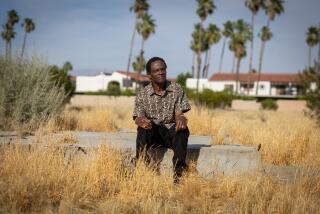Laguna faces big decisions about undergrounding utilities in 2018
The Laguna Beach City Council will have some big decisions to make in 2018 regarding undergrounding of overhead utility poles and wires.
City staff members on Feb. 6 are expected to present results of a community survey that asks voters whether they support placing one or two measures on the November ballot and details about potential tax-financing options.
The city presented two possible undergrounding funding options at the Dec. 5 council meeting: forming a community facilities district or floating a general obligation bond.
Deadly wildfires that scorched California this year increased Laguna residents’ calls to bury overhead utilities.
While official causes of some of the blazes, such as the Thomas fire in Ventura County, have not been determined, some have speculated sparks or explosions from power lines are to blame.
Fires caused by downed or faulty power lines and electrical equipment burned 149,241 acres in 2015, more than any other cause, the Los Angeles Times reported.
Community facilities districts assess special taxes that pay for infrastructure improvements, such as roads, parks, schools and undergrounding.
The Mello-Roos Community Facilities Act of 1982 authorized public agencies, such as cities, to issue tax-exempt bonds to pay for infrastructure, according to Riverside County’s website. Costs are passed on to homeowners in the form of special taxes.
What makes a community facilities district different from an assessment district is that taxes levied on parcels in a community facilities district are not required to be based on a property’s benefit from the infrastructure improvement, Harris & Associates, a firm focused on construction management, engineering and public finance, said in a study.
For example, uniform taxes could be levied on each parcel within the community facilities district, as compared to assessment districts in which some properties may receive greater benefit than others — and are taxed accordingly.
Taxes in a community facilities district can change over time, but can never exceed the maximum tax approved by voters, Harris’ report said. Two-thirds of registered voters within the proposed facilities district must approve its formation during a general or special election.
Laguna has for years been undergrounding utilities in various neighborhoods, using the assessment district model.
Another difference between assessment and facilities districts is that properties must be in a contiguous pattern in an assessment district. In a facilities district, properties can be scattered throughout the city.
Mayor Kelly Boyd said he wants the city to inform residents that if they already paid for undergrounding in their neighborhoods, they would not be taxed to fund work in another neighborhood as part of a community facilities district.
But all residents could end up paying to place overhead utility poles and wires underground along Laguna’s evacuation routes, such as Laguna Canyon Road and South Coast Highway. The city considers those roads as serving the entire community.
States and cities issue general obligation bonds to raise funds for public works projects. Public agencies pay bondholders through taxes, according to Morningstar Inc., an investment research and management firm headquartered in Chicago.
The ability to back up bond payments with tax funds is what makes general obligation bonds distinct from revenue bonds, which are repaid using the revenue generated by the specific project the bonds are issued to fund, such as fees from a parking garage, Morningstar said.
Laguna has used a general obligation bond before — to purchase open space in Laguna Canyon, according to an October city staff report.
Consultants are tallying the number of properties that still have utility poles and wires, said Laguna Public Works Director Shohreh Dupuis
Twitter: @AldertonBryce
More to Read
Sign up for Essential California
The most important California stories and recommendations in your inbox every morning.
You may occasionally receive promotional content from the Los Angeles Times.











